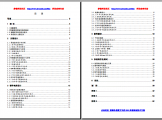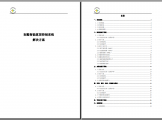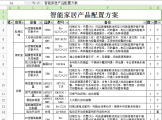|
在完成了一个简单的12AX7电子管前级后,我决定尝试其他的电子管,包括12AU7,也就是这个6922。

设计基本与12AX7前级相同,它是一个单增益级三极管阴极跟随器。然而,有一个重要的区别,是我在每格输入增加了一个1k电阻。这1K的电阻是必要的,可以避免寄生振荡。没有它,6922很容易产生振荡。 需要注意,在这个设计中不能使用6DJ8,因为作为阴极加热器,最大电压限制与6922不同。不用6922的话,E88CC或E188CC管都可以作为替换。

原理图


当为阴极跟随器设计最大负载时,必须考虑6922在150V时能承受的最大电压极限。我选择90V,如果阴极电压大于150V,加热器需要升高。然而,升高后不接地,线路容易产生噪声或受到电磁干扰。测试结果也表明,升高后,放大器的噪声增加了10dB以上。 对于90V的阴极,这意味着该管得降到160V。我也希望在9毫安时管子具有较高的输出电流,所以工作点(红点)选择在9mA 160V。 本篇我不再详细介绍电阻值的计算方法。增益计算公式:(电子管增益×板负载电阻)/(屏极负载电阻+板阻+ ((电子管增益 +1) ×阴极电阻))。6922的板电阻=3K,管增益= 33。套用公式,计算出的增益为22。 第一增益级的输出阻抗大约是2.7K,有点高。所以阴极跟随器需要降低输出阻抗,输出阻抗大致等于1 /(管的跨导)。 6922的跨导是12000毫欧。所以阴极跟随器的输出阻抗会在85欧姆这样一个较低的数值。

板子上设计的铜柱方便了我可以随时更换组件,这对于尝试不同的载重线特别有用。

DACT切换音量控制,切换时非常平滑。

位置输入选择,信号、接地切换。

6922/E88CC具有低失真,高输出电流,高跨导的特性,使得阴极跟随器具有85欧姆的低输出阻抗。所有这些特性使得6922成为一个不错的前置放大器管选择。

事实上,在我做过的三个电子管全集中,这个6922前级的声音表现是最好的,细节表现、动态方面都很优秀。 西门子E88CC银盾

这对西门子E88CC管是西门子公司后来生产的,E88CC印在管内金属板上的日期。

在底部,有一个数字标签。 2V峰值(满负载10K欧姆)测量,em-u 1212m PCI声卡+ RMAA 6.1:

Siemens E88CC的THD测量,THD = 0.026% 西门子E88CC灰盾

1960年份的Siemens & Halske E88CC,这是早期西门子的产品。

左:管身上的AΦ1≠5F日期代码标注。右:另一例标注:AΦ1≠3C。 西门子E88CC灰盾THD测量,THD = 0.032%:

德律风根E88CC管

德律风根管底部有菱形标记 德律风根E88CC管THD测量,THD = 0.035%:

总谐波失真的测试结果表明,西门子比德律风根失真低,这可能解释了两个管之间的声音速度的差别:“Telefunken E88CC,相比6922寿命长、音乐性好、声音细节表现力强的特点,有其温暖、准确再现的特点。”(以上评论引述https://www.tubeworld.com/6922.htm) 在听了这些管子后,我的建议是,如果你看重的最大的细节分辨性,可以选择新的银盾西门子。如果想要好的温暖的声音细节,选择德律风根吧。老款的灰盾西门子管表现则介于两者中间,能平衡地表现出声音细节和音乐性。(原文选自shine7.com)
| 


























 提升卡
提升卡 置顶卡
置顶卡 沉默卡
沉默卡 喧嚣卡
喧嚣卡 变色卡
变色卡 千斤顶
千斤顶 显身卡
显身卡 楼主
楼主
































